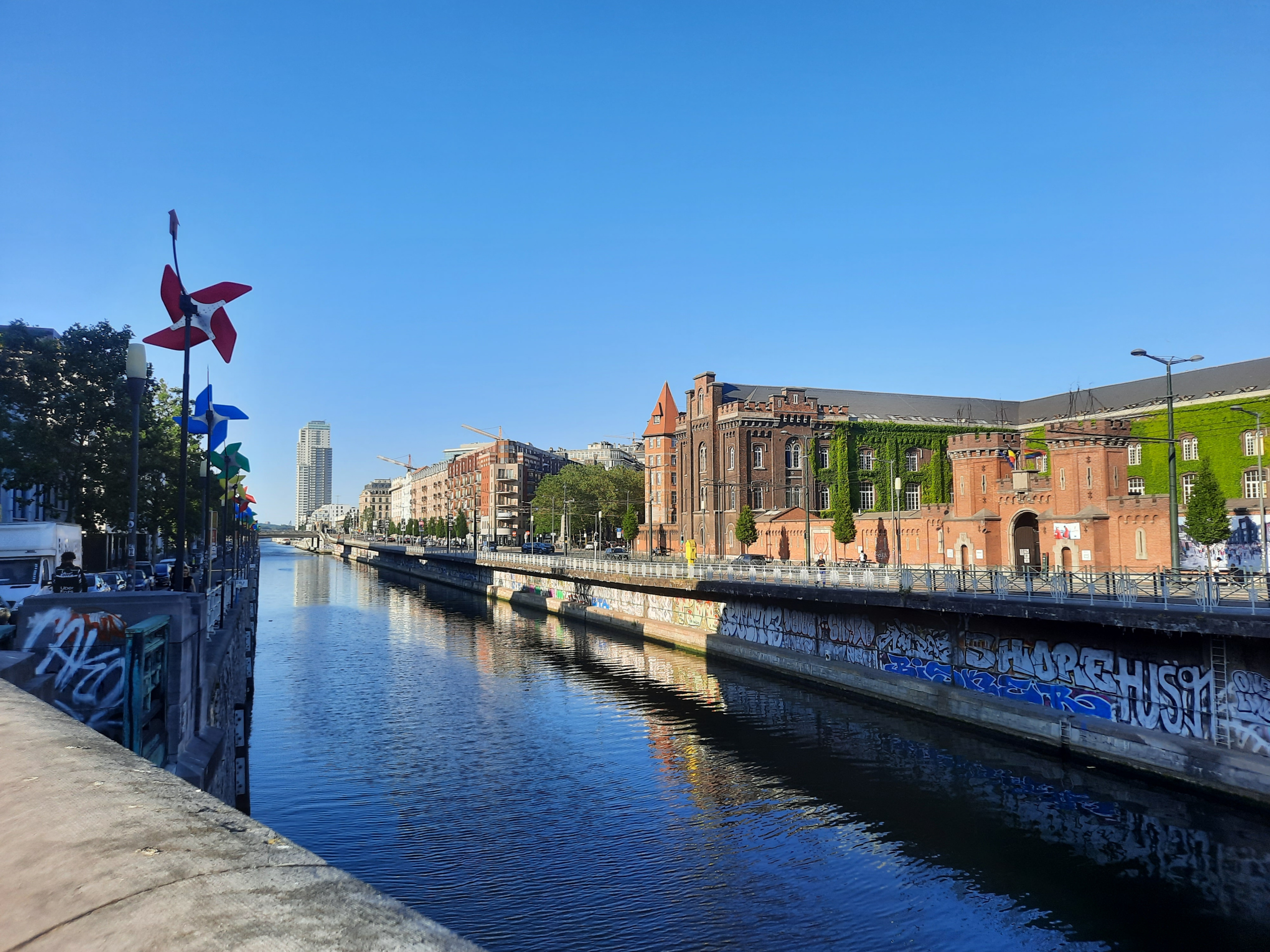Embarking on a journey from Brussels city centre to the lively Dansaert area, and then following the Brussels canal up to the new KANAL building is one of the nicest walks you can take in the Belgian capital on a warm summer evening. Dividing trendy Dansaert from the notoriously dangerous Molenbeek neighbourhood, the Brussels canal was dug in the 19th century and served as an important waterway. In recent years, the European Regional Development Fund has supported the redevelopment of the area, which is now a place of experimentation and innovation aiming at reshaping the inner city.
A combination of a pedestrian bath and a cycle lane runs along the canal, making for a pleasant stroll or ride by the water. Colourful windmills, street art, some benches and trees, and renovated buildings along the path show the extent of urban development that is taking place here. Posters inform passers-by about the efforts of cleaning up the canal, for example through litter shields. And a bike-counting sensor shows that on this day alone, almost 6,000 bikes had passed by. For the first months of 2023, this number is at 710,900. Speaking to a local resident confirms what is visible: The part of Molenbeek opposite Dansaert is now being upgraded, becoming a much safer area.
However, after the KANAL Centre Pompidou building, which is currently under construction and will offer a place of culture and exchange that is open to all, the canal walk suddenly changes. There are men taking drugs, construction sites, overflowing dust bins, and very narrow paths that make you realise exactly where the attempts at urban revitalisation have stopped. Once the KANAL building opens in 2024, this might change, and the northern part of the Brussels canal could become equally attractive. But there is a long way to go.
This project of the revitalisation of blue space and the surrounding urban environment holds important lessons: By providing an accessible, safe, and beautiful way of strolling or cycling by the water, you can attract residents and visitors, slowly turning a former industrial area into a cultural hub. People from both neighbourhoods, the more affluent Dansaert and the infamous Molenbeek, are using the new walkway for leisure. Similarly, there is a mix of attendees at the different nightlife venues, from bistros to clubs, some of which overlook the canal. Flemish music meets Moroccan beats, and the Millennium Iconoclast Museum of Art, opposite KANAL, shows temporary exhibitions of young, revolutionary artists.
A former industrial site on the bank of the canal, Tour & Taxis shows how to transform a warehouse and maritime terminal into an exhibition space with a large food court. A farm for oyster mushrooms, an environment museum, and a sustainable village called BE-HERE showcase ecological initiatives and future solutions for how to live in a city. Almost every week, a new project pops up in this vibrant neighbourhood. Hotels, co-working spaces, and new housing projects round out the picture.
The Brussels canal holds several important lessons. It shows that by investing in a neighbourhood through sustainable development, innovative and cultural projects, housing interventions, and cleaning up the canal, an attractive new neighbourhood can be created. The former industrial wasteland is experiencing a true renaissance – but only up to a certain point. Overall, the canal is 14 kilometres long. Extending the revitalisation project further will be the next challenge to ensure that all neighbouring areas can benefit from sustainable, and equitable urban development.

